 Your new post is loading...
 Your new post is loading...
"Between them, Dave Isay, TED Prize winner and founder of StoryCorps, and Brandon Stanton, founder of Humans of New York, have collected more than 75,000 stories from regular people around the world. Isay collects his stories as audio files, while Stanton takes a photo and then interviews his subject — but they’ve both developed fascinating techniques for helping people to open up. They sat down recently to talk about their work and their thoughts on what makes for an honest, open interview environment."
Read the full article to find out more about these tips to draw out stories from your interviewee: - A supportive culture breeds good stories.
- Engage deeply. Interrupt kindly.
- Trust in people.
- Do not commodify your stories.
- If you have a calling, pursue it relentlessly.
"The very epic nature of The Hero’s Journey makes it problematic for most for us as marketers. Relying on this type of story assumes we have the full attention of our audience as well as the content to make it work.
What if you don’t actually have a strong enough story with all the twists and turns of the Hero’s Journey? Your story falls flat and ends up trying too damn hard.
There are so many ways to tell stories in your business, but if you’re going to use the Hero’s Journey, deconstruct it so you’re not telling an epic story, but a much more bite-sized one. Every one of the 12 steps of The Hero’s Journey could give you the jumping off point for stories to share in your business."
Read the full article to find out more about these four examples of how to turn the traditional journey into one related to your business or yourself: - Ordinary World
- Call to Adventure
- Meeting with the Mentor
- Return with Elixir
"When we think about bringing interactive fiction into the classroom we often focus on the technology. I’ve written here about using accessible tools such as Twine, Twine 2.0, Inform 7, and Inklewriter to create everything from games to interactive essays and digital humanities projects. Bringing in software of this type can be a great way to transform an assignment and add procedural literacy outcomes to a range of disciplines. However, before we get into the technology, we need an idea."
Read the full article to find out more about these exercises that provide playful starting points to making interactive narratives: - Interactive Fiction Party Game
- Create Your Own Writing Adventure
- Existing Generative Games
"I’m devoting this post to some of the rookie storytelling mistakes I’ve seen in my 18 years as the President of Public Words Inc. Specifically, in the form of presentations and speeches."
Read the full article to find out more about these five common rookie storytelling mistakes: - In trying for shock value, they deprive their listeners of interest.
- In a desire to be authentic, they give us too much information.
- In a desire to interest a wide audience, they fail to go deep.
- In a fear of self-disclosure, they fail to tell us the most important things.
- In a wish to appear successful, they hide their failures.
Learn how to tell stories that will captivate even the most challenging audiences by reading the blog post that gives the complete behind-the-scenes story about this presentation: http://buff.ly/1B8ehRa
View the presentation to find out more about these 3 steps tpo a good story: - Beginning - complication
- Middle - therefore & but
- End - transformation
Via Ariana Amorim
Today’s audience is hungry for content, but individuals are following their own customized path of consumption. While some may be starving for a hearty research report, others prefer their information intake broken down into bite-sized nuggets. By offering a diverse menu of content types, you will be better positioned to feed your audience’s wide-ranging appetites.
Read the full article to find out more about considering the four basic “food groups” of content creation to get you to your menu of 77 storytelling content types: - Share Wisdom through WORDS
- Paint a Picture Using STATIC IMAGES
- Create Impact with DYNAMIC MULTIMEDIA
- Invite Participation via INTERACTION
- Building a Diverse Menu (snacks, starters, entrees, desserts)
|Thanks in great part to social networks, new traditions of storytelling for business/brands have evolved from what "THEY" the businesses, want people to know, to the stories that people care about. This shift has meant that businesses have had to learn (often times the hard way) that marketed information is not really communication, least of all a story worthy of inspiring engagement or conversation with others.
I've worked with brands for over twenty years. Admittedly, I have crafted my fair share of "traditional" stories for my clients. Over time though, I've come to recognize that certain kinds of stories are more successful than others in bringing business and people closer together. These stories succeed because of their ability to produce greater emotional and social engagement, and thereby story-sharing with others."
Read the full article to find out more about these seven strategies for how to evolve beyond mere information to a more human-centric approach to storytelling: - FROM Focus on Size and Stats TO the People Within
- FROM Mass Media Push TO Building Engaging Relationships
- FROM Demographics TO Understanding People & Communities
- FROM Closed Culture TO Collaborative Social Business
- FROM Leadership Authority and Title TO Leadership Vision and Influence
- FROM Stories of Product and Process TO Promise and Purpose
- FROM Marketing Communication to Enabling Social Currency
View the SlideShare to find out more about these points to help you pick a story for your presentation: - Personalise
- Perspective
- Who is the hero?
- Give authenticity
- Add drama
- Fame & fortune
- Happy endings
- Ask others
Note: There doesn't appear to be anything on slides 10-16.
Via José Carlos
"They simply started telling stories. And believe me there are many stories out there, which you can tell just as well and people will like to read your stories. To help you come up with some ideas and start out with your own storytelling, here are some examples of what kind of stories you could tell (and what stories other people tell).
Keep in mind, the stories, which will work best for you depend on what situation you are in, what audience you want to attract and what you want to achieve with your stories. And also keep in mind, the best stories which YOU can tell have your personality in them – so, do not be afraid to show it."
Read the full article to find out more about these examples of stories you could tell: - Tell how you solved problems other people might have too
Give your opinion on some current “hot topics” in your area of interest Relate how you built (or are building) your business Give your clients a voice Give your employees a voice Tell how you tested different solutions for a problem and why you chose the one you chose Tell how you solved your client’s problems Answer questions with your storytelling
"Storytelling is the art of convincing your target audience to empty their pockets for your products and services without actually giving them a sales pitch. What replaces the sales pitch in this campaign is a fairy tale that revolves around their lives and features your products every now and then showcasing how ‘useful’ they are.
Great stories always begin with a hook, making a promise to the reader that reading it is going to be worth their time (and money). The first and foremost thing to do post setting the hook, is to make your customer the hero of the story!
Then you can walk in all the elves and miscellaneous fancies to keep him hooked; no matter which character you use, ensure that is relatable to the reader and not you.
No matter how long your story is, the one thing that will keep your readers going is the crown prize that is being promised or suggested through the tale. The next step is to just make sure your story has a happy ending that is in sync with what has been filled in by your audience previously via feedbacks, polls and other interactions. Remember, everyone loves a happily ever after!"
Read the full article to find out more about these tips to keep in mind when you tell your own fairy tale: - Don’t be Cruella — just quit the show off!
- Don’t run on Cinderella’s time — make it last!
- Don’t be a bore — what if the shoe never got lost?
- Don’t go haywire — stick to a theme!
- Don’t add to their grief — make it a happy ending!
- Don’t make the ending a definite one — keep them wanting more!
"Welcome to storytelling parties. Here is a place where those of us who appreciate the art of storytelling come to mingle, share storytelling ideas and techniques, find storytelling inspiration, learn about the history of storytelling, and discover storytelling festivals."
Hold your own storytelling party. Access the website to get to their blog and find out more about how to: - Learn how to throw a party
- Cultivate great storytelling ideas, themes and techniques
- Learn about the art of storytelling
- Share stories and storytelling ideas with other contributors
- Listen to other storytellers
- Storytelling kits
Novelist Mohsin Hamid is now working for the half-century-old creative consultancy Wolff Olins as the company's first chief storytelling officer (CSO).
"The CSO is a thoroughly modern title, the product of a growing interest in corporate storytelling, a pursuit that has lured other established writers and journalists into the world of corporate hackery.
Hamid's job isn't to shill for Wolff Olins or tell its own story, but to help its clients learn how to tell theirs—or find out what their story is to begin with.
Hamid says there are three moments in a company's life cycle when most leaders become aware of the importance of internal storytelling. The first is at birth. The second opportunity for storytelling comes when new leaders arrive, or when a company is acquired. A third occasion for storytelling is when a company seems to be having difficulty growing."
Read the full article to find out more about the above three points and Hamid's following tips for crafting your company's internal story, to motivate your employees, and maybe discover new strategies along the way: - Be true
- It's about "you," not you
- Don't be afraid of emotion
- Keep it simple
- Hire a novelist
"I’ve been running the St. John’s Haunted Hike ghost tour and working as a professional storyteller since 1997, and along the way, I have trained many other storytellers, guides, museum workers and interpreters, volunteers, and docents about telling stories in museums, historic sites, and parks. I was recently asked for a list of things I have learning in a cultural tourism context."
Read the full article to find out more about Dale's seven storytelling tips: - People want to hear good stories, well told
- Tourists want to feel like they are in on something local, or something secret
- Tell real stories about real people
- Tell a story you love, and your audience will love it too
- Don’t be afraid of difficult stories
- Stories are a living thing
- Be mindful of whose stories you are telling, and whose stories are not being told
|
"Have you wondered how to shoot a hospital video story that moves your audience to tears? Or how to write a CEO speech that will earn a standing ovation?
Nasdaq Corporate Solutions and Ragan Communications are offering a free guide—Strategic Storytelling—full of tips for telling your organization's story though a wide range channels, from newsletters to videos."
Read the full article to obtain the link to this free guide featuring advice and case studies from corporations such as Intel, Fiat Chrysler Automobiles and American Express Open Forum. This 24 page guide covers: - The three elements of a story
- How to find stories within your company
- Starting your story: the anecdotal lede
- How to bring your story to life with video
- How to write memorable speeches & intriguing op-eds
- How to write compelling press releases
- Storytelling using brand journalism
- How to get emotional with images
- How to educate and entertain with infographics
"Like many of you, I have sat in marketing meetings with internal stakeholders and heard from the team they need more datasheets or other “needed marketing assets.” From my perspective, “a datasheet with more people photos that allegedly look like your customer” isn’t going to make the difference. The issue is not the datasheet itself, but that the datasheet doesn’t paint the picture for the prospect of what she can expect from your product or service. In fact, Forrester reported that 70 percent of the content B2B buyers read and study before making a purchase decision is actually found by themselves; as opposed to being given to them by marketing or sales. You need to tell a consistent story as to why prospective customers should buy from you."
Read the full article to find out more about these storytelling tips to to create a consistent structure: - Setting: Where Your Story Takes Place
- Characters: Make Your Brand More Human
- An Event To Start Things Rolling: Let Clients Be The Lead In Your Storytelling
- Development: Think Like A Movie Director
- The Climax: It’s About The “Ah Ha” Moment
- The Ending: Storytelling Is Innate In Marketing Or Public Relations
Content marketing is a matter of storytelling. When captivating for audiences, product- and/or service-pushing prowess is improved.
Access the article to view more details on these 5 pillars of digital storytelling: - audiences want the truth
- develop meaningful characters
- make your brand's personality shine through
- build intrigue through suspense
- make certain to include a beginning, middle, and end
"Elon Musk and Steve Jobs are both known for their seemingly mystical power to distort reality. What gives them this ability isn’t a quirk of a charismatic leader; it’s a learnable skill called storytelling.
The better at storytelling someone is, the more that readers and listeners are transported to a whole new world. According to studies conducted on this transportation phenomenon, great stories alter beliefs, result in the loss of access to real-world facts, evoke emotions, and significantly reduce ability to detect inaccuracies. To understand this phenomenon, you don’t need to look any further than your own personal experience desperately rooting for an immortal, time-traveling mutant in X-Men or another equally impossible character and plot from your favorite movie."
Read the full article to find out more about how 11 top online storytellers, who collectively generate hundreds of millions of page views every month, craft stories: - Balance the universal with the specific
- Be unapologetically authentic
- Test your story until it’s a wow every time
- Do a double punch with visual stories
- Add incertainty to your plot
- Disrupt your industry’s fairy tale stories
- Come from a place of stillness
- Use open loops to create anticipation
- Use quotes to build characters
- Find and reverse-engineer the emotions behind great stories
- Bring them through an emotional roller coaster
Robert Munsch is an American-born Canadian author of children’s books, noted for his humorous and imaginative stories.
Munsch is known for his exuberant storytelling methods, with exaggerated expressions and acted voices. He makes up his stories in front of audiences and refines them through repeated tellings
Access the article to see a larger version of the image above, which details the steps to tell a story like Munsch: - Start with something familiar
- Add something strange
- Use repetition and sound effects
- Find ways for the kids to participate
- Have a good ending
Do you remember a moment when you were able to visualise, even almost taste or smell, the scenario of a story in a conversation?
Putting this art into practice (and doing it well) is exceptionally essential when it comes to telling your brand’s story using pictures. Instagram certainly is your best friend for this purpose because it is, after all, the new word-of-mouth marketing."
Read the full article to find out more about how to use these questions as a guide to incorporate storytelling on your Instagram platform: - What Message Am I Sending Out?
- What Kind of Emotions Will This Picture Evoke?
- How Can I Engage Their Imagination?
"Writer's block is a crippling condition in which one's creative process slows down to the minimum. It's a symptom of 'creativity blockage' which hits writers. People differ in how they deal with their writer's block but one effective way we have at our hands is the use of technology."
Read the full article to obtain the links and find out more about these iPad apps that tackle writer's block by providing prompts and incentives to write creatively: - Write About This
- Prompts
- A Novel Idea
- The Brainstormer
Via Ariana Amorim
"It might seem daunting to tell a compelling story in just 140-characters, but it can be done."
Read the full article to find out more about these tips for telling a great brand story on Twitter: - Highlight the change
- Create a character
- Time it right
- Use multimedia
"Fairy tales help children to answer basic existential questions, like who am I, what is the good life, where do I belong? Through fairy tales they learn to navigate reality and survive in a world full of ambiguities and dangers.
Executives, with their seeming mastery of the world, may be an unlikely audience for such fantasy. But the universal truth is, everyone likes a story. And fairy tales, with their immediately recognisable dramatics, characters and fundamental moral truths provide universal insights into human behaviour, illustrating the dangers of leadership and various ways in which executives can derail."
Read the full article to find out more about: The fairy tale in the leader’s journey The five deadly dangers of leadership Finding the knight in shining armour within Happily ever after
"Let us tell you a quick story. It starts out with a few of us Lexbloggers attending a #MozTalk in Seattle. While some of us were drawn to the promise of complimentary snacks and beer – all of us were struck by the title “Storytelling through Digital Marketing.”
The all-woman panel of Carrie Jones, Debra Music, Kandice Carlson, Misty Weaver and Erica McGillivray focused on how important storytelling is in today’s online world. Not only do you need to tell the story of your brand, but you need to be listening to the stories of your audience. Story telling is not a one way street – it never has been and especially in today’s online world, it’s all about the community of stories. This MozTalk was awesome because it reinforces what we believe to be true: blogging is storytelling."
Read the full article to find out more about these three main themes about storytelling in the digital age: - It’s nothing if it’s not authentic.
- Developing a story is a two-way street.
- Stories take time.
We’ve researched and tried all kinds of storytelling tools. Here are the ones you need to know about.
Find out more about the tools listed under these headings: - writing
- websites/blogs
- getting paid
- reporting
- staying organized
- staying up on the news
- audio
- video
- images
- resources
- email
- social media
- SEO
"“Eat it and get out!” That’s the mantra for Ed Debevic’s, Chicago’s only retro themed diner. At Ed Debevic’s, guests step into a 50’s–style diner to experience the ambiance of a misty yore, complete with bobby sox, saddle shoes, and juke box. The surprise “twist” on this nostalgic experience is that the front-of-the-house employees are professional entertainers, trained to create a rollicking, in-your-face service experience.
Ed knows how to run an effective restaurant. Ed also knows how to run a “storied” restaurant. The tactic he has selected is the one used by many of the service greats, including Cirque du Soleil, DisneyWorld, Universal Studios Hollywood, Universal Orlando, Hard Rock Café, and many of the top hotels in Las Vegas. They all start with a front story or theme, use a back-story for depth, and include a storyboard to map out the customer experience. To this they add set, costume, and, if need be, script to convey the story."
Read the full story to find out more about using storying as a part of your service experience and the four main components on which you need to focus: - Find or develop a strong front theme and back story.
- Develop and use a storyboard of the customer experience.
- Dress your “set” in sync with your story.
- Dress employees to fit the story.
|



 Your new post is loading...
Your new post is loading...



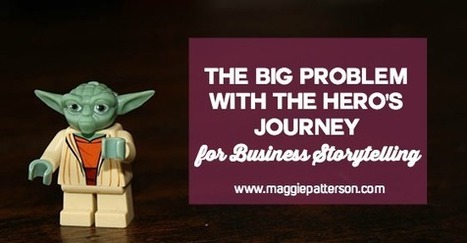



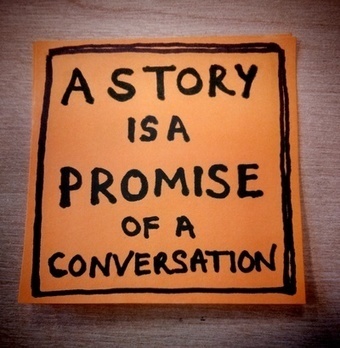










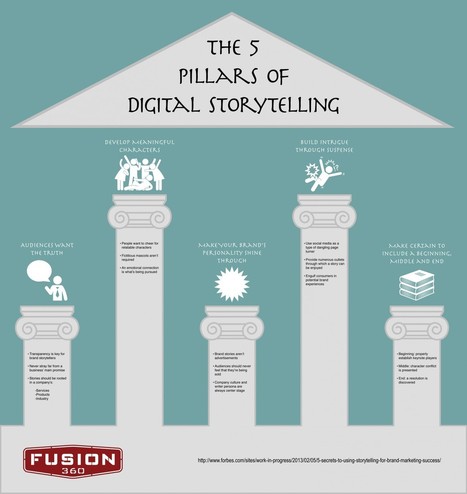



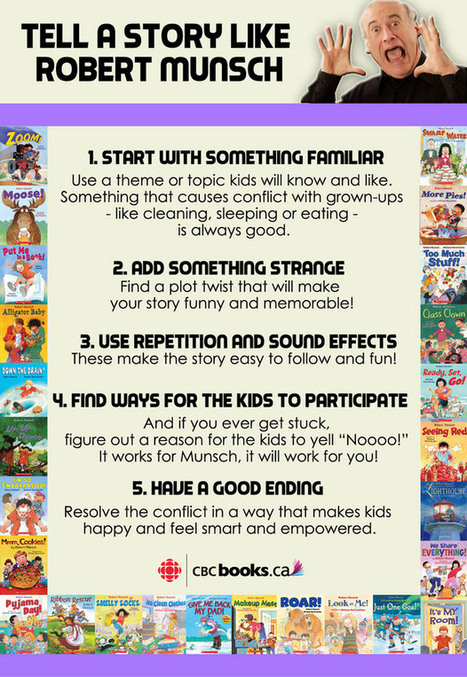





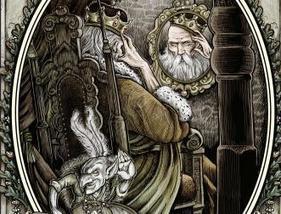









E"ngage deeply. Interrupt kindly. People aren’t very good at knowing how to tell their own stories, says Stanton, and that means that they’re often vague and imprecise. Cutting through that is part of the interviewer’s job."